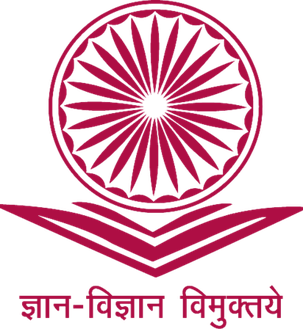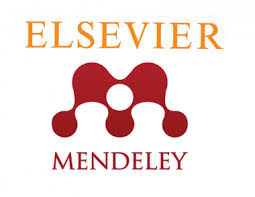INTERNATIONAL JOURNAL OF CREATIVE RESEARCH THOUGHTS - IJCRT (IJCRT.ORG)
International Peer Reviewed & Refereed Journals, Open Access Journal
IJCRT Peer-Reviewed (Refereed) Journal as Per New UGC Rules.
ISSN Approved Journal No: 2320-2882 | Impact factor: 7.97 | ESTD Year: 2013
Call For Paper - Volume 13 | Issue 10 | Month- October 2025
Scholarly open access journals, Peer-reviewed, and Refereed Journals, Impact factor 7.97 (Calculate by google scholar and Semantic Scholar | AI-Powered Research Tool) , Multidisciplinary, Monthly, Indexing in all major database & Metadata, Citation Generator, Digital Object Identifier(CrossRef DOI)
Contact Us Click Here
WhatsApp Contact Click Here
Volume 6 | Issue 2 |
| IJCRT Journal front page | IJCRT Journal Back Page |
Paper Title: USE OF HERBAL PHARMACEUTICALS - ISSUES, CHALLENGES AND FUTURE PROSPECTIVES IN BOTANY..
Author Name(s): Dr. Ved Parkash
Published Paper ID: - IJCRT1135796
Register Paper ID - 271148
Publisher Journal Name: IJPUBLICATION, IJCRT
DOI Member ID: 10.6084/m9.doi.one.IJCRT1135796 and DOI :
Author Country : Indian Author, India, - , -, - , | Research Area: Science and Technology Published Paper URL: http://ijcrt.org/viewfull.php?&p_id=IJCRT1135796 Published Paper PDF: download.php?file=IJCRT1135796 Published Paper PDF: http://www.ijcrt.org/papers/IJCRT1135796.pdf
Your Paper Publication Details:
Title: USE OF HERBAL PHARMACEUTICALS - ISSUES, CHALLENGES AND FUTURE PROSPECTIVES IN BOTANY..
DOI (Digital Object Identifier) :
Pubished in Volume: 6 | Issue: 2 | Year: June 2018
Publisher Name : IJCRT | www.ijcrt.org | ISSN : 2320-2882
Subject Area: Science and Technology
Author type: Indian Author
Pubished in Volume: 6
Issue: 2
Pages: 560-565
Year: June 2018
Downloads: 87
E-ISSN Number: 2320-2882
Abstract
Demand for herbal pharmaceuticals has increased many folds during last three decades.Ayurveda is popularized by government efforts and large number of herbal practitioners , ethnobotanists and researchers .Researches are promoted for developing and processing of quality herbal preparations and dose standardization Huge quantity of ethnobotanical knowledge exist in india and is in use since ancient times. Any knowledge can perpetuates over such a long time only if it is effective and proved.Also a large number of herbal preparations are available in the market claiming permanent cure and other benefits. Traditional system of Herbal medicines are used on the basis of experiences,religious thoughts, beliefs and culture established during long time.Now a days herbal medicines are available in the market in the form of tablets, capsules and syrup in contrary to use of crude extracts and preparations used by local practitioners and by self at home. It is misleading to believe that all herbal medicines are safe and not associated with any risk.Traditional medicine is the sum total of the knowledge, skills and practices based on the theories, beliefs and experiences indigenous to different cultures, whether explicable or not, used in the maintenance of health and in the prevention, diagnosis, improvement or treatment of physical and mental illness(WHO) In order to handle herbal medicines, in particular, to analyse the causes of adverse events, national pharmacovigilance centres (or equivalent institutions) will need to acquire specific technical expertise. This will include trained personnel in relevant technical areas and facilities to analyse the products concerned, for which there is often insufficient information and lack of access to reliable information support. Many countries currently lack this expertise, in particular, access to suitable analytical laboratories. Member States have therefore recommended the establishment of regional laboratories specializing in the analysis of herbal products. WHO encourages Member States to explore the feasibility of this proposal.(WHO guidelines on safety monitoring of herbal medicines in pharmacovigilance system). If the traditional herbs, herbal preparations and practices are used properly with dose and duration characterizations these can be highly beneficial The present paper is aimed to discuss safety concerns, challenges and future perspectives. How the people get cured using crude herbal preparations at home.What are the drawbacks and advantages of using herbal pharmaceuticals
Licence: creative commons attribution 4.0
License
Keywords
Pharmaceuticals,ethnobotany, efficacy,phytotherapy, herbs.
License
Paper Title: A comparison of ACI-318(2005) and Euro code 4 (2004) for Uniaxially Loaded Composite Column
Author Name(s): Madhusudan B, Shilpa K C, Harapanahalli Harsha
Published Paper ID: - IJCRT1135767
Register Paper ID - 270087
Publisher Journal Name: IJPUBLICATION, IJCRT
DOI Member ID: 10.6084/m9.doi.one.IJCRT1135767 and DOI :
Author Country : Indian Author, India, - , -, - , | Research Area: Science and Technology Published Paper URL: http://ijcrt.org/viewfull.php?&p_id=IJCRT1135767 Published Paper PDF: download.php?file=IJCRT1135767 Published Paper PDF: http://www.ijcrt.org/papers/IJCRT1135767.pdf
Your Paper Publication Details:
Title: A COMPARISON OF ACI-318(2005) AND EURO CODE 4 (2004) FOR UNIAXIALLY LOADED COMPOSITE COLUMN
DOI (Digital Object Identifier) :
Pubished in Volume: 6 | Issue: 2 | Year: June 2018
Publisher Name : IJCRT | www.ijcrt.org | ISSN : 2320-2882
Subject Area: Science and Technology
Author type: Indian Author
Pubished in Volume: 6
Issue: 2
Pages: 358-373
Year: June 2018
Downloads: 116
E-ISSN Number: 2320-2882
Abstract
: Steel concrete composite systems have been widespread use in recent decades because of the benefits of combining the two construction materials. Reinforced concrete is inexpensive, massive and stiff, while steel members are strong, light weight and easy to assemble. In composite columns there are two principle types, Steel Reinforced Concrete (SRC) where a steel section is encased in concrete fully or partially and Concrete Filled Steel Tubes (CFST). Indian standard codes IS: 11384 (1985) and IS: 3935 (1966) for Composite Constriction have not covered the design of for uniaxially loaded steel concrete composite columns. Recent code IS: 800 (2007) has also not furnished the limit state design of composite columns. Therefore to design composite columns we need to go for different codes in use worldwide. EC 4 (2004) gives plastic stress distributions at different point in interaction curve for Uniaxially loaded composite column. ACI-318 (2005) gives strain compatibility method to draw interaction curve for Uniaxially loaded composite column. American Concrete Institute (ACI)-318 (2005) and Eurocode (EC) 4 (2004) design approaches for Uniaxially loaded Steel concrete composite columns are compared for Previous experimental studies. The ratio of Test/ Code is compared with concrete strength, steel strength, percentage of steel and width to thickness for both codes.
Licence: creative commons attribution 4.0
License
Keywords
Fully Encased Steel Reinforced Concrete (SRC), Square Concrete Filled Steel Tubes (CFST), and Circular Concrete Filled Steel Tubes (CFST).
License
Paper Title: Jatindra Nath Dowara: A Romantic Legacy in Assamese Poetry.
Author Name(s): Dr. Tarun Chandra Roy
Published Paper ID: - IJCRT1135747
Register Paper ID - 268948
Publisher Journal Name: IJPUBLICATION, IJCRT
DOI Member ID: 10.6084/m9.doi.one.IJCRT1135747 and DOI :
Author Country : Indian Author, India, - , -, - , | Research Area: Science and Technology Published Paper URL: http://ijcrt.org/viewfull.php?&p_id=IJCRT1135747 Published Paper PDF: download.php?file=IJCRT1135747 Published Paper PDF: http://www.ijcrt.org/papers/IJCRT1135747.pdf
Your Paper Publication Details:
Title: JATINDRA NATH DOWARA: A ROMANTIC LEGACY IN ASSAMESE POETRY.
DOI (Digital Object Identifier) :
Pubished in Volume: 6 | Issue: 2 | Year: April 2018
Publisher Name : IJCRT | www.ijcrt.org | ISSN : 2320-2882
Subject Area: Science and Technology
Author type: Indian Author
Pubished in Volume: 6
Issue: 2
Pages: 154-158
Year: April 2018
Downloads: 138
E-ISSN Number: 2320-2882
Abstract
The Jonaki Era in Assamese literature marked the advent of Romanticism, introducing a shift from traditional divine themes to those centered around human experiences, with an emphasis on the relationship between nature, beauty, and the arts. Although the English Romantic movement had faded by 1889, its influence remained strong in Assamese literature. The writers of this period, inspired by Romantic ideals, adopted these concepts to articulate their own thoughts and emotions.
Licence: creative commons attribution 4.0
License
Keywords
Jatindra Nath Dowara: A Romantic Legacy in Assamese Poetry.
License
Paper Title: TAXONOMIC INVESTIGATION OF SUB- FAMILY CAESALPINIACEAE OF HOJAI SUB DIVISION WITH SPECIAL REFERENCE TO PALYNOLOGY.
Author Name(s): Shagufta Ahmed, Dr Monjit Saikia
Published Paper ID: - IJCRT1135746
Register Paper ID - 269011
Publisher Journal Name: IJPUBLICATION, IJCRT
DOI Member ID: 10.6084/m9.doi.one.IJCRT1135746 and DOI :
Author Country : Indian Author, India, - , -, - , | Research Area: Science and Technology Published Paper URL: http://ijcrt.org/viewfull.php?&p_id=IJCRT1135746 Published Paper PDF: download.php?file=IJCRT1135746 Published Paper PDF: http://www.ijcrt.org/papers/IJCRT1135746.pdf
Your Paper Publication Details:
Title: TAXONOMIC INVESTIGATION OF SUB- FAMILY CAESALPINIACEAE OF HOJAI SUB DIVISION WITH SPECIAL REFERENCE TO PALYNOLOGY.
DOI (Digital Object Identifier) :
Pubished in Volume: 6 | Issue: 2 | Year: April 2018
Publisher Name : IJCRT | www.ijcrt.org | ISSN : 2320-2882
Subject Area: Science and Technology
Author type: Indian Author
Pubished in Volume: 6
Issue: 2
Pages: 140-153
Year: April 2018
Downloads: 125
E-ISSN Number: 2320-2882
Abstract
Taxonomical and palynological study were carried out from February to July, 2017. A total of 10 species belonging to 7 genera were recorded in the Hojai sub division, out of which 5 species were perennial trees, 3 were large shrub and 2 were shrub. Their leaves were found to be unipinnate and peripinnately compound with pulvinous leaf bases. Inflorescence were found in either raceme or panicle type. Among the 10 taxa, six have yellow flowers and flowering time was at summer. Stamens were found to be heterodynamous.I n Cassia fistula Linn., all the10 stamens were fertile, while in others, out of the 10 stamens each, 7 were fertile and rest 3 were sterile. The fruits were represented by pod (legume). Pollen grains in most of the taxa were found to be trizonocolpate and colpi never meet each other at either pole. The shape of the grains was prolate to sub-prolate while in Delonix regia it is oblate to spheroidal and in Saracaasoca it is spheroidal. The Largest pollen grains were observed in Bauhinia tomentosa L.with a length of 3.8?m and smallest grains in Cassia javanicaLinn. and C. fistula Linn. with a length of 1.06?m. The pollen grains of all the recorded species were found to bear thin exine. Senna occidentalis Linn. had the thinnest exine with 0.098?m. and hence may be considered as highly evolved among all the 10 species under study. The taxonomic enumeration of all the taxa were done with proper description, analytical diagrams, and photographs. The palynomorphological study revealed that the pollen grains of the taxa were from non- colpate to trizonocolporate to penta- colpate. Most of them Oblate, Sub- oblate, Prolate, Sub- prolate and spheroidal in shape.
Licence: creative commons attribution 4.0
License
Keywords
Pollen grain, Hojai, Pod,Taxa, Exine
License
Paper Title: Sharad Joshi ke vyangya sahitya me rajnitik yatharth
Author Name(s): Radhesyam
Published Paper ID: - IJCRT1135740
Register Paper ID - 268852
Publisher Journal Name: IJPUBLICATION, IJCRT
DOI Member ID: 10.6084/m9.doi.one.IJCRT1135740 and DOI :
Author Country : Indian Author, India, - , -, - , | Research Area: Science and Technology Published Paper URL: http://ijcrt.org/viewfull.php?&p_id=IJCRT1135740 Published Paper PDF: download.php?file=IJCRT1135740 Published Paper PDF: http://www.ijcrt.org/papers/IJCRT1135740.pdf
Your Paper Publication Details:
Title: SHARAD JOSHI KE VYANGYA SAHITYA ME RAJNITIK YATHARTH
DOI (Digital Object Identifier) :
Pubished in Volume: 6 | Issue: 2 | Year: May 2018
Publisher Name : IJCRT | www.ijcrt.org | ISSN : 2320-2882
Subject Area: Science and Technology
Author type: Indian Author
Pubished in Volume: 6
Issue: 2
Pages: 99-105
Year: May 2018
Downloads: 158
E-ISSN Number: 2320-2882
Abstract
Sharad Joshi ke vyangya sahitya me rajnitik yatharth
Licence: creative commons attribution 4.0
License
Keywords
Sharad Joshi ke vyangya sahitya me rajnitik yatharth
License
Paper Title: A REPORT ON THE EFFECT OF COMPACTION AND CURING ON THE STRENGTH OF CORE CONCRETE
Author Name(s): DIPALI N. GAYWALA
Published Paper ID: - IJCRT1135733
Register Paper ID - 268685
Publisher Journal Name: IJPUBLICATION, IJCRT
DOI Member ID: 10.6084/m9.doi.one.IJCRT1135733 and DOI :
Author Country : Indian Author, India, - , -, - , | Research Area: Science and Technology Published Paper URL: http://ijcrt.org/viewfull.php?&p_id=IJCRT1135733 Published Paper PDF: download.php?file=IJCRT1135733 Published Paper PDF: http://www.ijcrt.org/papers/IJCRT1135733.pdf
Your Paper Publication Details:
Title: A REPORT ON THE EFFECT OF COMPACTION AND CURING ON THE STRENGTH OF CORE CONCRETE
DOI (Digital Object Identifier) :
Pubished in Volume: 6 | Issue: 2 | Year: April 2018
Publisher Name : IJCRT | www.ijcrt.org | ISSN : 2320-2882
Subject Area: Science and Technology
Author type: Indian Author
Pubished in Volume: 6
Issue: 2
Pages: 51-55
Year: April 2018
Downloads: 148
E-ISSN Number: 2320-2882
Abstract
Concrete is the most widely used construction material in today's world. The process of making concrete and placing needs close supervision to achieve the targeted design parameters. Once the concrete of required strength and workability is designed, the placing of concrete plays an important role. The difference between good and bad concrete can also be attributed to the quality control, provided all other factors are essentially maintained in the process of concrete making. Quality control refers to proper compaction, form working and curing. Compressive strength of concrete cast in structures is generally determined by core cylinder tests. This requires concrete cores to be taken out of structures and to be tested for compressive strength. This result will be indicative of the concrete quality from making to placing. However, these standard tests conducted on specimens represent the potential quality of concrete only when they are subjected to full compaction.
Licence: creative commons attribution 4.0
License
Keywords
A REPORT ON THE EFFECT OF COMPACTION AND CURING ON THE STRENGTH OF CORE CONCRETE
License
Paper Title: Problems and Prospects of Rural Entrepreneurship- An Empirical Study
Author Name(s): Savitha P. R.
Published Paper ID: - IJCRT1135717
Register Paper ID - 268098
Publisher Journal Name: IJPUBLICATION, IJCRT
DOI Member ID: 10.6084/m9.doi.one.IJCRT1135717 and DOI :
Author Country : Indian Author, India, 570022 , Mysore, 570022 , | Research Area: Commerce All Published Paper URL: http://ijcrt.org/viewfull.php?&p_id=IJCRT1135717 Published Paper PDF: download.php?file=IJCRT1135717 Published Paper PDF: http://www.ijcrt.org/papers/IJCRT1135717.pdf
Your Paper Publication Details:
Title: PROBLEMS AND PROSPECTS OF RURAL ENTREPRENEURSHIP- AN EMPIRICAL STUDY
DOI (Digital Object Identifier) :
Pubished in Volume: 6 | Issue: 2 | Year: May 2018
Publisher Name : IJCRT | www.ijcrt.org | ISSN : 2320-2882
Subject Area: Commerce All
Author type: Indian Author
Pubished in Volume: 6
Issue: 2
Pages: 909-918
Year: May 2018
Downloads: 189
E-ISSN Number: 2320-2882
Abstract
The current empirical study investigates the issues faced by rural entrepreneurs, concentrating on elements like market accessibility, financing availability, insufficient infrastructure, and a lack of training and education. The three villages in the Mandya district contributed to the study with its primary data. The study examined the 80 respondents' valid responses. The study outlined the main obstacles that prevent rural businesses from growing, such as a lack of funding and support, inadequate infrastructure, a lack of marketing opportunities, a lack of entrepreneurial skills, a lack of community support, and a lack of knowledge and awareness. The study also examined the prospects of rural entrepreneurship, highlighting the potential for growth through government initiatives, adequate infrastructure, digitalization, networking, technology assistance, leadership, and community-based support systems. The findings underscore the need for targeted interventions to empower rural entrepreneurs, thereby enhancing rural livelihoods and contributing to the overall development of the rural economy. This study offers insights into the policy framework and strategic measures required to foster a conducive environment for rural entrepreneurship, ensuring long-term sustainability and inclusive growth.
Licence: creative commons attribution 4.0
License
Keywords
Rural Entrepreneurship, rural entrepreneurship, problems, challenges, prospects
License
Paper Title: Kiran Desai's The Inheritance of Loss: A Re-Read
Author Name(s): Dr. V. R. Dalavai
Published Paper ID: - IJCRT1135714
Register Paper ID - 267699
Publisher Journal Name: IJPUBLICATION, IJCRT
DOI Member ID: 10.6084/m9.doi.one.IJCRT1135714 and DOI :
Author Country : Indian Author, India, - , -, - , | Research Area: Science and Technology Published Paper URL: http://ijcrt.org/viewfull.php?&p_id=IJCRT1135714 Published Paper PDF: download.php?file=IJCRT1135714 Published Paper PDF: http://www.ijcrt.org/papers/IJCRT1135714.pdf
Your Paper Publication Details:
Title: KIRAN DESAI'S THE INHERITANCE OF LOSS: A RE-READ
DOI (Digital Object Identifier) :
Pubished in Volume: 6 | Issue: 2 | Year: April 2018
Publisher Name : IJCRT | www.ijcrt.org | ISSN : 2320-2882
Subject Area: Science and Technology
Author type: Indian Author
Pubished in Volume: 6
Issue: 2
Pages: 888-890
Year: April 2018
Downloads: 182
E-ISSN Number: 2320-2882
Abstract
This study examines Kiran Desai's highly regarded novel, The Inheritance of Loss (2006), which has received numerous important accolades, including the Booker Prize, emphasizing its literary importance. The Inheritance of Loss, Desai's second novel after Hullabaloo in the Guava Orchard (1998), delves into intricate subjects of identity, displacement, and the cultural conflicts arising from the clash between the past and the present. Desai effectively depicts the challenges faced by Indian and American expatriates, the impact of colonialism, and the emotional upheaval caused by migration through well-developed characters and a compelling narrative style. The novel's varied characters, including the resentful retired judge and the uprooted immigrant Biju, exemplify these overarching themes, offering a subtle analysis of the immigrant experience and the enduring consequences of colonialism. Desai's narrative style, marked by a combination of realism and irony, establishes The Inheritance of Loss as a compelling critique of worldwide cultural changes and the individual consequences of these alterations.
Licence: creative commons attribution 4.0
License
Keywords
Kiran Desai's The Inheritance of Loss: A Re-Read
License
Paper Title: A study on Cooperative and Competitive Federalism in India
Author Name(s): Dr. Nanjundamurthy
Published Paper ID: - IJCRT1135711
Register Paper ID - 267753
Publisher Journal Name: IJPUBLICATION, IJCRT
DOI Member ID: 10.6084/m9.doi.one.IJCRT1135711 and DOI :
Author Country : Indian Author, India, 560070 , Bangalore, 560070 , | Research Area: Medical Science All Published Paper URL: http://ijcrt.org/viewfull.php?&p_id=IJCRT1135711 Published Paper PDF: download.php?file=IJCRT1135711 Published Paper PDF: http://www.ijcrt.org/papers/IJCRT1135711.pdf
Your Paper Publication Details:
Title: A STUDY ON COOPERATIVE AND COMPETITIVE FEDERALISM IN INDIA
DOI (Digital Object Identifier) :
Pubished in Volume: 6 | Issue: 2 | Year: April 2019
Publisher Name : IJCRT | www.ijcrt.org | ISSN : 2320-2882
Subject Area: Medical Science All
Author type: Indian Author
Pubished in Volume: 6
Issue: 2
Pages: 870-876
Year: April 2019
Downloads: 140
E-ISSN Number: 2320-2882
Abstract
Federalism is derived from the Latin word 'Foedus', which means 'Agreement'. In fact, federation is an agreement between two types of governments sharing power and controlling their respective spheres. Thus a federation is a system of national and local governments, combined under a common sovereignty with both national as well as federating units having autonomous spheres assigned to them by the constitution. India opted for quasi-federal structure after independence. The term "federal" has not been mentioned in the constitution but the working of Indian democracy is essentially federal in structure. However, it is the practical working style of federalism, which brought the concept of cooperative federalism and competitive federalism in India. The present government is stressing on the need to leverage the potential of cooperative and competitive federalism for achieving all round inclusive development in India. In this context there is a need to examine the concepts of cooperative and competitive federalism.
Licence: creative commons attribution 4.0
License
Keywords
Federalism, Power Sharing, Co-operation, Central, State Governments.
License
Paper Title: DEPRECIAITON OF INDIAN CURRENCY AND GROWTH RATE IN INDIAN ECONOMY
Author Name(s): Dr.G.K. NAGARAJU
Published Paper ID: - IJCRT1135703
Register Paper ID - 251020
Publisher Journal Name: IJPUBLICATION, IJCRT
DOI Member ID: 10.6084/m9.doi.one.IJCRT1135703 and DOI :
Author Country : Indian Author, India, - , -, - , | Research Area: Science and Technology Published Paper URL: http://ijcrt.org/viewfull.php?&p_id=IJCRT1135703 Published Paper PDF: download.php?file=IJCRT1135703 Published Paper PDF: http://www.ijcrt.org/papers/IJCRT1135703.pdf
Your Paper Publication Details:
Title: DEPRECIAITON OF INDIAN CURRENCY AND GROWTH RATE IN INDIAN ECONOMY
DOI (Digital Object Identifier) :
Pubished in Volume: 6 | Issue: 2 | Year: May 2018
Publisher Name : IJCRT | www.ijcrt.org | ISSN : 2320-2882
Subject Area: Science and Technology
Author type: Indian Author
Pubished in Volume: 6
Issue: 2
Pages: 814-819
Year: May 2018
Downloads: 197
E-ISSN Number: 2320-2882
Abstract
Depreciation refers to a fall in the value of the domestic currency which is caused by the demand for foreign currency exceeding its supply in the market. In such a situation one has to pay more than before to get units of foreign currency. This fall takes place in the market and on its own. Market determined exchange rate serves the purpose of aligning the domestic economy with the world economy was the price route. As consequences the domestic price gets linked up with those of the world price. With the liberalizations and globalization of the economy in recent years, imports are bound to increase. The lessening of restrictions on imports and lowering of tariff on imports which the economic reform implies, an increase in imports has in fact taken place. Again with trade is having become an important element of the new strategy of growth. India being a developing economy with high inflation, depreciation of the currency is quite natural. Depreciation of rupee is good, so long as it is not volatile. A random depreciation that we have seen in the last few months is bad and it has hurt the economy. Right from the beginning of year 2013, the value of rupee has been depreciating.
Licence: creative commons attribution 4.0
License
Keywords
DEPRECIAITON OF INDIAN CURRENCY AND GROWTH RATE IN INDIAN ECONOMY
License
October 2025
Volume 13 | Issue 10
Last Date :
31-Oct-2025
Submit Manuscript Online Impact Factor: 7.97 Review Results : Within 02-03 Days Paper Publication : Within 02-03 Days

ISSN: 2320-2882 Impact Factor: 7.97 and ISSN APPROVED Journal Starting Year (ESTD) : 2013

ISSN: 2320-2882 Impact Factor: 7.97 and ISSN APPROVED Journal Starting Year (ESTD) : 2013

CONFERENCE PROPOSAL CONFERENCE PROCEEDINGS







































































